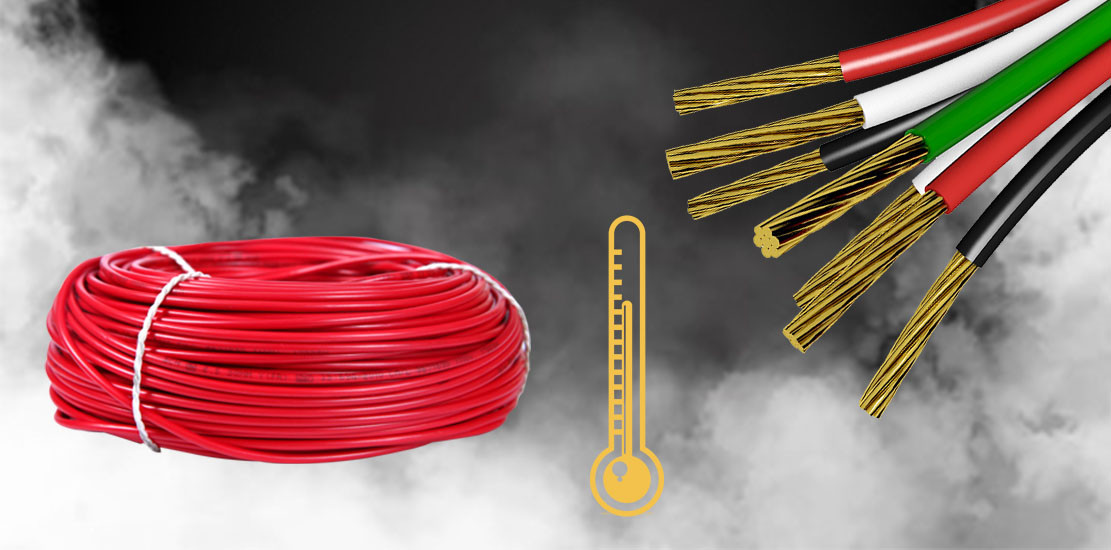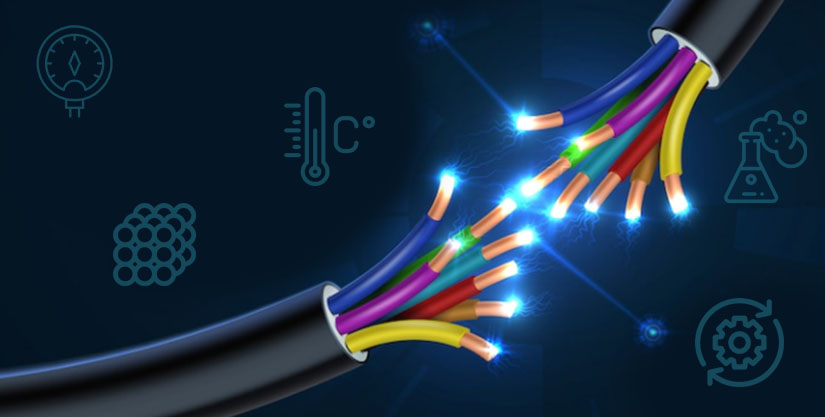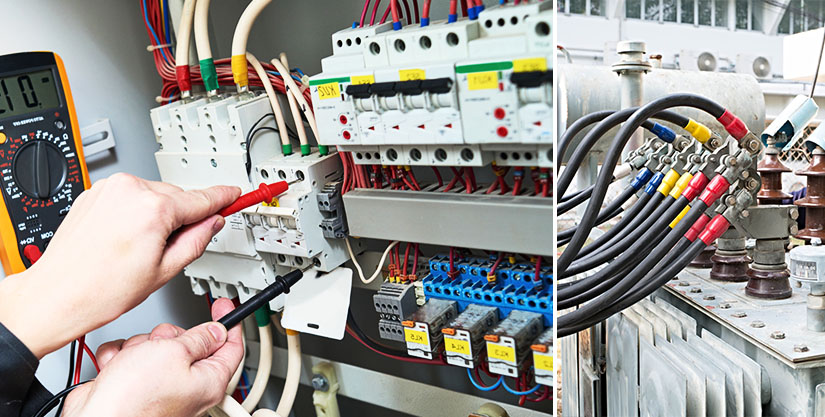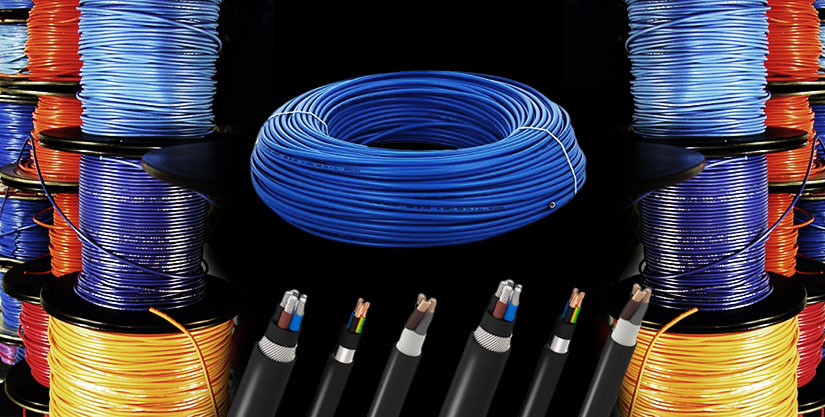
FRLS Cables: Design, Construction, and its Growing Importance
The rising concern due to fire hazards, loss of life, and property and managing emergencies is driving towards innovative cables and wires to manage such situations. FRLS cables are one such innovation in the wires and cables industry to handle fire-related hazards and minimize panic during a fire.
The fire-resistant properties and features of FRLS cables, such as high-temperature index, less smoke density, oxygen index of 30% for temperature more than 27 degrees Celsius, low smoke emission, acid evolution of less than 17%, etc., enables emergency services to work effectively during the fire and reduce the loss of fire, life, and property.
Gloster Cables offers reliable, performing, and high-quality FRLS cables for industrial, commercial, and domestic usage.
What Are FRLS Cables?
FRLS cables are flame retardant low smoke cables used at locations more prone or exposed to fire. Usually, these cables get used in industrial complexes, power plants, public places, hotels, complexes, etc.
FRLS cables get manufactured using a specially developed FRLS compound for sheathing. They are inner sheathed with extruded PVC and insulated with HRPVS. These compound sheathings are resistant to ignition and flame propagation, and the smoke emission during a fire is very low. The PVC compound present in FRLS cables helps release low smoke compared to other PVC-coated wires. These wires emit a smaller number of corrosive fumes and are less toxic.
FRLS cables get stranded with high conductivity and high-grade copper. It uses single galvanized and round steel wire for armoring and PVC for jacketing. These cables are flame retardant and hence stop the propagation of fire due to cables.
Specification and Properties of FRLS Cables

FRLS cables overcome several deficiencies of FR cables, such as conductor withstanding temperature that is only 70 degree Celsius in FR cables.
Specification of FRLS Cables
The conductor used for FRLS cables uses high conductivity annealed plain copper. Next, the conductor gets a layer of heat barrier using a high-temperature sustaining tape. For insulation, fire-resistant cross-linked polyethylene gets used. The inner sheath preparation uses zero halogen and low smoke compound, and the armor is made of galvanized steel. Finally, the outer sheath is of zero halogen and low-smoke compound. And this specification provides excellent flame-retardancy, low smoke, and toxic gas emission.
Properties of FRLS Cables
FRLS cables have multiple properties. Some of them are listed down.
 Oxygen Index
Oxygen Index
The oxygen index of FRLS cables is more than 30% at 27 degrees Celsius +/- 2 degree Celsius, checked as per ASTM-D-2863.
 Temperature
Temperature
The temperature index of the FRLS cable is more than 250 degrees Celsius.
 Smoke Density
Smoke Density
These cables have a smoke density of less than 50% max.
 Acid Evolution
Acid Evolution
The hydrochloric acid evolution from FRLS cables shall be less than 17.5%.
 Operating Conditions
Operating Conditions
These cables can bear temperatures of up to 650 °C, 750 °C, and 950 °C as per various conditions of operation and applications
FRLS Construction Features and Testing
The development of FRLS cables considers the laid and probable fire conditions. It includes operating and climatic conditions they may get subjected to, installation and transportation damage, laying conduits, ducts, trenches, trays for direct burial in the ground, etc. The construction features of FRLS cables include:
Conductor
The conductor can be electrolytic grade copper or annealed bare copper as per the latest IS 8130 standard (conductors for insulated electric cables and flexible chords) and of circular shape. The high conductivity copper rod should be smooth and uniform in quality, free from scales, splits, and any defects.
Insulation
The insulation shall be of extruded HR PVC material, i.e., high resistant/high-temperature PVC material, conforming to the latest IS 5831 standards (PVC insulation and sheath of electric cables).
Inner Sheath
FRLS cable's inner sheath should be FRLS ST-2 types and follow IS-5831 specifications. The sheath extruded over the laid-up core and the surface of the sheath shall be uniform, continuous, and free from defects.
Any filler material used shall be non-hygroscopic and thermoplastic material. And over the filler and for binding the core materials like PVC, Millar, or plastic be used.
Armour
A galvanized round steel wire confirming the latest IS-3975 standards, suggesting mild steel wires and tapes for armoring cables, shall be used.
Outer Sheath
The outer sheath extruded uniformly across the armoring of the cable shall be FRLS PVC-ST-2 type. The sheath should confirm IS-1554 Part-I (PVC insulated cable for working voltage up to and including 1100 V) and for dimensional requirements to meet the IS-5831 standard.
Testing

FRLS cables go through rigorous tests to ensure their quality and cable performance. Some of the tests conducted are
Critical Oxygen Index Test
The oxygen index test, under specification ASTM-D 2863, determines the percentage of oxygen required to support the combustion of insulating material at room temperature. The value for FRLS cables is 29%, whereas for ordinary PVC insulated cables is 23%.
Temperature Index Test
The test determines the temperature at which normal oxygen content of 21 % in the air will support the combustion of insulating material. For FRLS, the temperature index is more than, and ASTM-D 2863 & BICC (Handbook Chapter No. 6) specifications help determine it.
Smoke Generation Test
The test conducted using ASTM-D 2863 Specifications help determine the visibility and light transmission under fire of insulation material. FRLS cables have visibility of more than 40 percent.
Acid Generation Test
The acid generation test ascertains the amount of hydrochloric gas evolved from cable insulation under fire. FRLS cables have an acid generation of less than 2 percent under fire, and the test follows IEC 754-1 specification.
Other tests performed are high voltage tests, tests of armor wires, conductor resistance tests, annealing tests, etc.
Advantage and Its Growing Importance
The growing awareness of fire hazards and drawbacks of normal PVC wires during fire situations is growing the importance of FRLS wires and cables. Ordinary PVC wires cannot withstand a temperature of more than 70 degrees Celsius, burn freely, emits dense corrosive and toxic smoke, and makes the situation more difficult in an emergency.
FRLS cables overcome these disadvantages of PVC wire by offering the following benefits:
Enhance Safety with Gloster FRLS Cables

For over two decades, Gloster Cables has been manufacturing wires and cables for industrial, domestic, and commercial usage for the above two decades. FRLS cables manufactured by Gloster Cables have excellent electrical and mechanical properties, high flame retardant and fire-resistant properties, and meet oxygen index, temperature, smoke density, acidic properties, etc. FRLS cables from Gloster give you reliability, high performance, high quality, and enhanced safety in critical conditions.
CONTACT US
